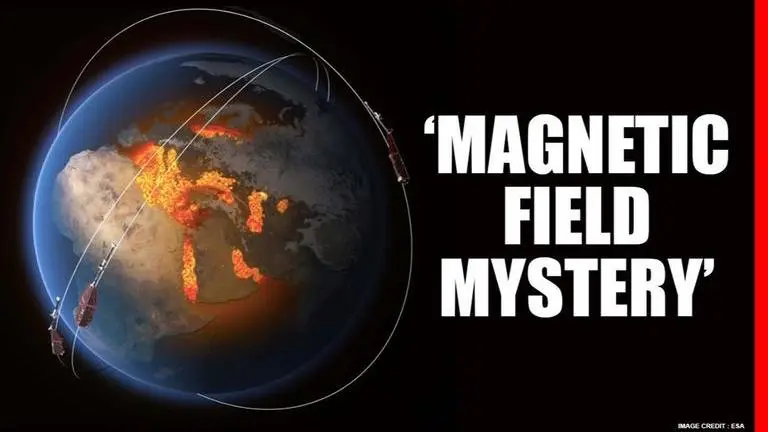Updated 1 July 2020 at 17:01 IST
Physicists reveal why Earth’s magnetic field over Pacific region has been weakening
A new study published in the Journal Nature Geoscience, physicists from the University of Alberta have expounded reason for Earth's weakening magnetic field.
- Science News
- 3 min read

In new research, scientists have been able to decode the century-old mystery behind the changes in the earth’s magnetic field. A new study published in the Journal Nature Geoscience, physicists from the University of Alberta has revealed the reason for the weakening magnetic field over the Pacific region since its first observation in 1930. Led by geophysicist Mathieu Dumberry, the study revealed that the core flows like the winds in the atmosphere or currents in the ocean that maintain the Earth’s magnetic field was weaker under the Pacific.
Further, the study explained that the planetary-scale current that hangs close to the equator in the Atlantic region was deflected to higher latitude in the Pacific region that resulted in the weakening of the magnetic fields. However, the reason for this is yet to be found. Geophysicist Mathieu Dumberry, the lead author of the study, observed in the research, “Earth’s magnetic fields have been a puzzle since the 1930s when it was first noticed.”
Dumberry said, There are fluid motions in the liquid core of the Earth that generate and maintain magnetic fields that give us the Northern Lights and shield us from charged particles from space. Scientists model the magnetic field for a variety of applications, including determining your orientation when you look at a map on your smartphone.
Indicative that the makeup of the core-mantle boundary region was heterogeneous and needed more research, Dumberry noted that while the scientific model answers the reason for weakening magnetic fields, it poses new questions about the occurrence of those phenomena. “The conductance of the lowermost mantle is most probably not uniform around the globe,” Dumberry stressed in the study titled ‘Weak Magnetic Field Changes Over the Pacific Due to High Conductance in Lowermost Mantle’.
Advertisement
Weakening in strength by 5% every 100 years
According to a published report by NASA, the earth is in the phase called the Brunhes Magnetic Chron when the South Magnetic Pole is in the Northern Hemisphere. While the Scientists have long known that the magnetic pole moves, the Earth's magnetic field have been observed to be weakening in strength by 5% every 100 years. NASA scientists predict that may be near zero in another few thousand years at this rate. Additionally, Scientists at the European Space Agency are using data from ESA’s Swarm constellation to improve their understanding of the weakening magnetic fields stretching from Africa to South America across an area known as the ‘South Atlantic Anomaly.’ Having lost around 9% of its strength on a global average, the magnetic intensity of the Earth in the aforementioned area dropped from around 24 000 nanoteslas to 22 000 between1970 to 2020 that had created a puzzle for the scientists, according to a report published by ESA.
Advertisement
(All Images Credit: NASA)
Published By : Zaini Majeed
Published On: 1 July 2020 at 17:01 IST



